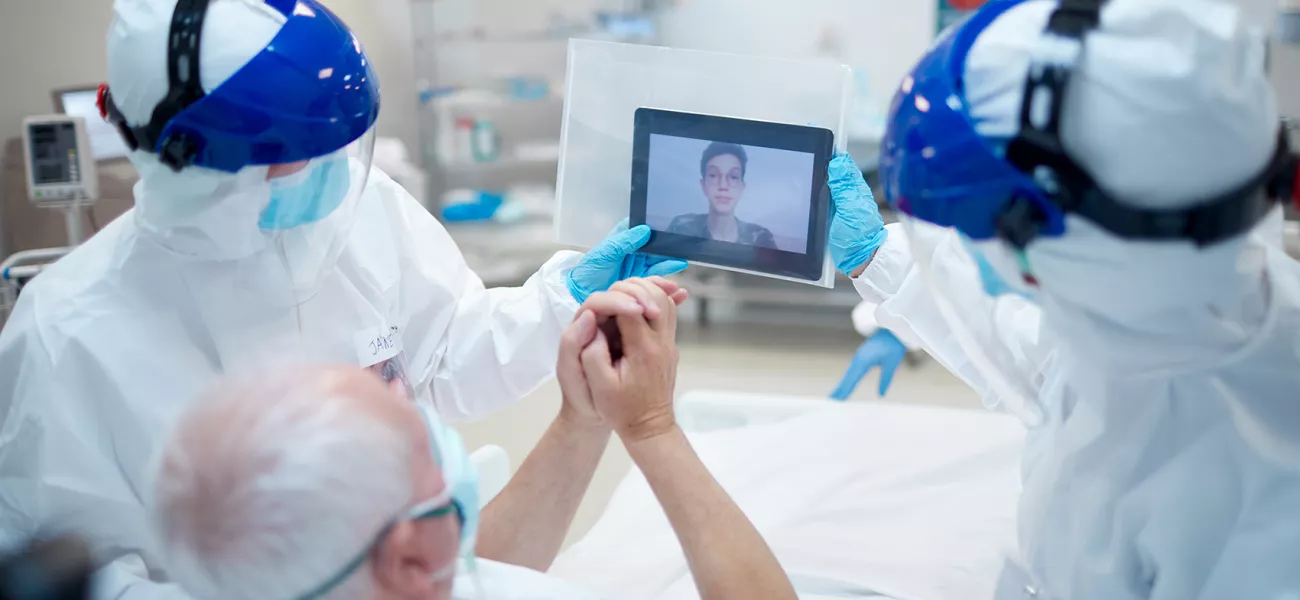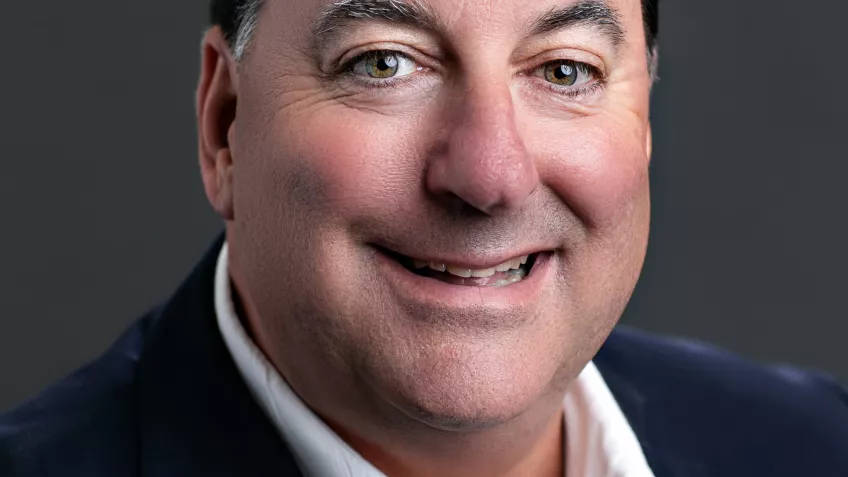
The pandemic has transformed the healthcare industry in many unexpected ways. It remains to be seen how many of these changes will be permanent. But what we do know is there are strong indications that technology-based solutions, which were brought on to curb the spread of infection, will continue to play a heavy role in the security and safety of healthcare facilities moving forward.
The healthcare industry has been altered in many unexpected ways because of the coronavirus pandemic, which has infected more than 30 million people in the U.S. and 145 million around the globe. [1]
The pandemic is an extraordinary event that brought about singular changes in the ways healthcare facilities operate. Several policy directives that were made in the best interests of patients and healthcare professionals to help inhibit the spread of COVID-19 are likely to be revoked as the pandemic subsides. For example, restrictions on outside visitation rights and elective surgeries being postponed.

It remains to be seen whether every change will be permanent or if hospitals will resume their normal, pre-pandemic procedures. There are strong indications that technology-based solutions that were brought on to help curb the spread of infection will likely remain and even increase in usage as the industry embraces their benefits.
Paul Baratta, Segment Development Manager, Healthcare, Axis Communications, Inc. sat down to discuss how the pandemic is transforming hospitals. He noted that three major trends in healthcare operations may influence outcomes, and have the common thread of using technology more to elicit positive outcomes.
- Consolidation among hospitals is expected to occur post-pandemic.
- A shortage of registered nurses, physicians, and other healthcare professionals is not expected to abate in the near future.
- The healthcare industry will be compelled to be better prepared for the next unforeseen crisis.
Mergers and acquisitions among hospitals are likely to increase because of the financial impact felt during the pandemic. This is especially true for hospitals that had been previously struggling and those with inherently lower revenues. Some experts believe that due to a greater focus on expenditures, hospitals will boost their efforts to check costs through the use of technology and data that allows them to operate more efficiently; for example, artificial intelligence and analytics boost the power of video surveillance to replace security officers at emergency room entrances. [2]
A sustained shortage of healthcare professionals, especially registered nurses, was predicted more than a decade ago and now extends beyond nurses to physicians and other staff. Among the factors causing the shortage are the aging baby boomer population and a top-heavy number of healthcare workers who are reaching retirement age, the latter exacerbated by the pandemic. Employment of registered nurses is projected to grow 7 percent from 2019 to 2029, faster than the average for all occupations. [3]
Further, the Association of American Medical Colleges asserts that the U.S. could have an estimated shortage of between 54,100 and 139,000 physicians, including gaps in both primary and specialty care, by 2033. [4]
One way such staffing shortages will impact hospital operations is by prioritizing technology to fill in the gaps left by a diminished staff.
"More hospitals will need to find ways to provide patient care using technology, such as video, audio, and analytics, so staff can better ‘see’ the patient’s condition," says Baratta.
“Staff has been depleted. Using technology—with clear guidelines and procedures on its use and clear expectations on its functions—will be very important,” says Baratta. “More hospitals will need to find ways to provide patient care using technology, such as video, audio, and analytics, so staff can better ‘see’ the patient’s condition.”
One way is through remote patient monitoring, which is successfully being used at hospitals to not only reduce physical contact during the pandemic, but help care staff to be more efficient and attentive to patients.
One solution from Axis Communications that has been deployed in several hospitals uses network cameras and advanced audio technology to enable physicians and nurses to check in on patients remotely around-the-clock. Particularly useful for watching patients who are considered fall risks, these solutions enable watchers to monitor potentially up to six patients at once.
Remote patient monitoring enables care in real time from anywhere a worker may be checking in. It helps doctors and nurses avoid unnecessary contact with potentially contagious patients, and conversely it helps protect vulnerable patients from potentially contagious healthcare workers.
But the uses for remote patient monitoring systems supersede the pandemic. It’s expected the technology will continue to be adopted by healthcare institutions. This is because not only does it allow for remote observation, it also extends the eyes and ears of healthcare workers with video and audio analytics technology.
Video analytics, such as Axis’ comprehensive suite, are programmed to look for visual signs of danger, such as a patient falling, leaving his or her bed, or having a seizure. Audio analytics listen for audible signs of danger like coughing, cries of pain, or breaking glass, as well as aggressive voices that might indicate a violent episode is unfolding. Analytics aid in better awareness and decreased response time by healthcare practitioners.
“Analytics has now been integrated into the electronic medical record systems (such as Epic) that give clinicians eyes and ears, in addition to the monitoring of telemetry and physiological monitors,” Baratta describes.
Another technology conventionally considered a key element of a security system is access control, which is part of Axis’ catalog and long a staple in hospitals for setting hard boundaries such as at central pharmacies. Solutions like advanced door stations equipped with network cameras and two-way intercoms, when integrated with touchless access control and analytics, will allow doors to open automatically for authorized personnel or stay locked for someone not wearing a mask.
Once the pandemic subsides and visitors are allowed back into hospitals at normal rates, an integrated door station/access control system helps maintain that low touch environment for visitors, too. With a downloadable app or a temporary QR code, the system will grant access to authorized visitors who are in authorized areas.
“Hospital security directors have reported that reducing visitors and enforcing visitor identification has had positive effects on reducing crime. Visitor management will continue and is now more widely accepted as a good practice,” Baratta says. “Many hospitals were doing away with visitor hours; the future may see them again established. Hospital administration has seen the benefit of visitor management, and it has become more commonplace.”
“It has shown the need for technology that can be used to assist staff and be relevant in the future—technologies such as virtual patient observation solutions, analytics and audio used to help observe, deter, and detect issues,” explains Baratta.
Hospitals and healthcare facilities have always planned for unexpected events, but the coronavirus pandemic is different. Changes in how hospitals react to events will include better planning and preparation, “preparing for the worst and hoping for the best,” Baratta describes.
“Hospitals have been drilling for things like hazardous material spills and surge events for years. This picked up after 9/11,” Baratta notes. “But hospitals were not prepared for a 24/7/365-plus ‘surge’ event. Most of their preparation, training and drills were done for a singular disaster event that had an ending. The pandemic has not ended.”
Not expected was the need for supplies in the quantities that were required by a pandemic, Baratta emphasizes. This showed a vulnerability in the practice of supplies storage and procurement. Another exposed problem was staffing models. “It has shown the need for technology that can be used to assist staff and be relevant in the future—technologies such as virtual patient observation solutions, analytics and audio used to help observe, deter, and detect issues,” he stresses.
The pandemic has had far-reaching impact on hospital operations, and technology plays a key role. Use-cases for such solutions have been successfully demonstrated at major hospitals and the benefits are clear. Long after the emergency measures put in place to reduce the spread of COVID-19 cease to be necessary, the healthcare industry will reap the rewards of implementing advanced technologies that can improve security, operations, and patient care.
[1] Home - Johns Hopkins Coronavirus Resource Center (jhu.edu)
[2] More hospital consolidation is expected post-pandemic (hfma.org)
[3] Registered Nurses : Occupational Outlook Handbook: : U.S. Bureau of Labor Statistics (bls.gov)
[4] New AAMC Report Confirms Growing Physician Shortage | AAMC